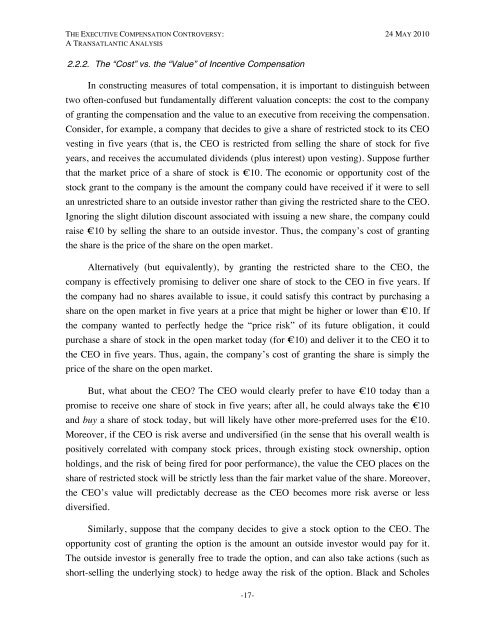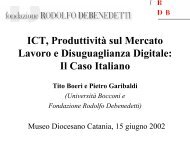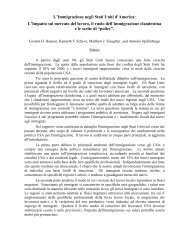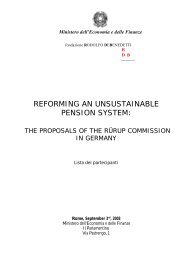The Executive Compensation Controversy - Fondazione Rodolfo ...
The Executive Compensation Controversy - Fondazione Rodolfo ...
The Executive Compensation Controversy - Fondazione Rodolfo ...
Create successful ePaper yourself
Turn your PDF publications into a flip-book with our unique Google optimized e-Paper software.
THE EXECUTIVE COMPENSATION CONTROVERSY: 24 MAY 2010A TRANSATLANTIC ANALYSIS2.2.2. <strong>The</strong> “Cost” vs. the “Value” of Incentive <strong>Compensation</strong>In constructing measures of total compensation, it is important to distinguish betweentwo often-confused but fundamentally different valuation concepts: the cost to the companyof granting the compensation and the value to an executive from receiving the compensation.Consider, for example, a company that decides to give a share of restricted stock to its CEOvesting in five years (that is, the CEO is restricted from selling the share of stock for fiveyears, and receives the accumulated dividends (plus interest) upon vesting). Suppose furtherthat the market price of a share of stock is €10. <strong>The</strong> economic or opportunity cost of thestock grant to the company is the amount the company could have received if it were to sellan unrestricted share to an outside investor rather than giving the restricted share to the CEO.Ignoring the slight dilution discount associated with issuing a new share, the company couldraise €10 by selling the share to an outside investor. Thus, the company’s cost of grantingthe share is the price of the share on the open market.Alternatively (but equivalently), by granting the restricted share to the CEO, thecompany is effectively promising to deliver one share of stock to the CEO in five years. Ifthe company had no shares available to issue, it could satisfy this contract by purchasing ashare on the open market in five years at a price that might be higher or lower than €10. Ifthe company wanted to perfectly hedge the “price risk” of its future obligation, it couldpurchase a share of stock in the open market today (for €10) and deliver it to the CEO it tothe CEO in five years. Thus, again, the company’s cost of granting the share is simply theprice of the share on the open market.But, what about the CEO? <strong>The</strong> CEO would clearly prefer to have €10 today than apromise to receive one share of stock in five years; after all, he could always take the €10and buy a share of stock today, but will likely have other more-preferred uses for the €10.Moreover, if the CEO is risk averse and undiversified (in the sense that his overall wealth ispositively correlated with company stock prices, through existing stock ownership, optionholdings, and the risk of being fired for poor performance), the value the CEO places on theshare of restricted stock will be strictly less than the fair market value of the share. Moreover,the CEO’s value will predictably decrease as the CEO becomes more risk averse or lessdiversified.Similarly, suppose that the company decides to give a stock option to the CEO. <strong>The</strong>opportunity cost of granting the option is the amount an outside investor would pay for it.<strong>The</strong> outside investor is generally free to trade the option, and can also take actions (such asshort-selling the underlying stock) to hedge away the risk of the option. Black and Scholes-17-









